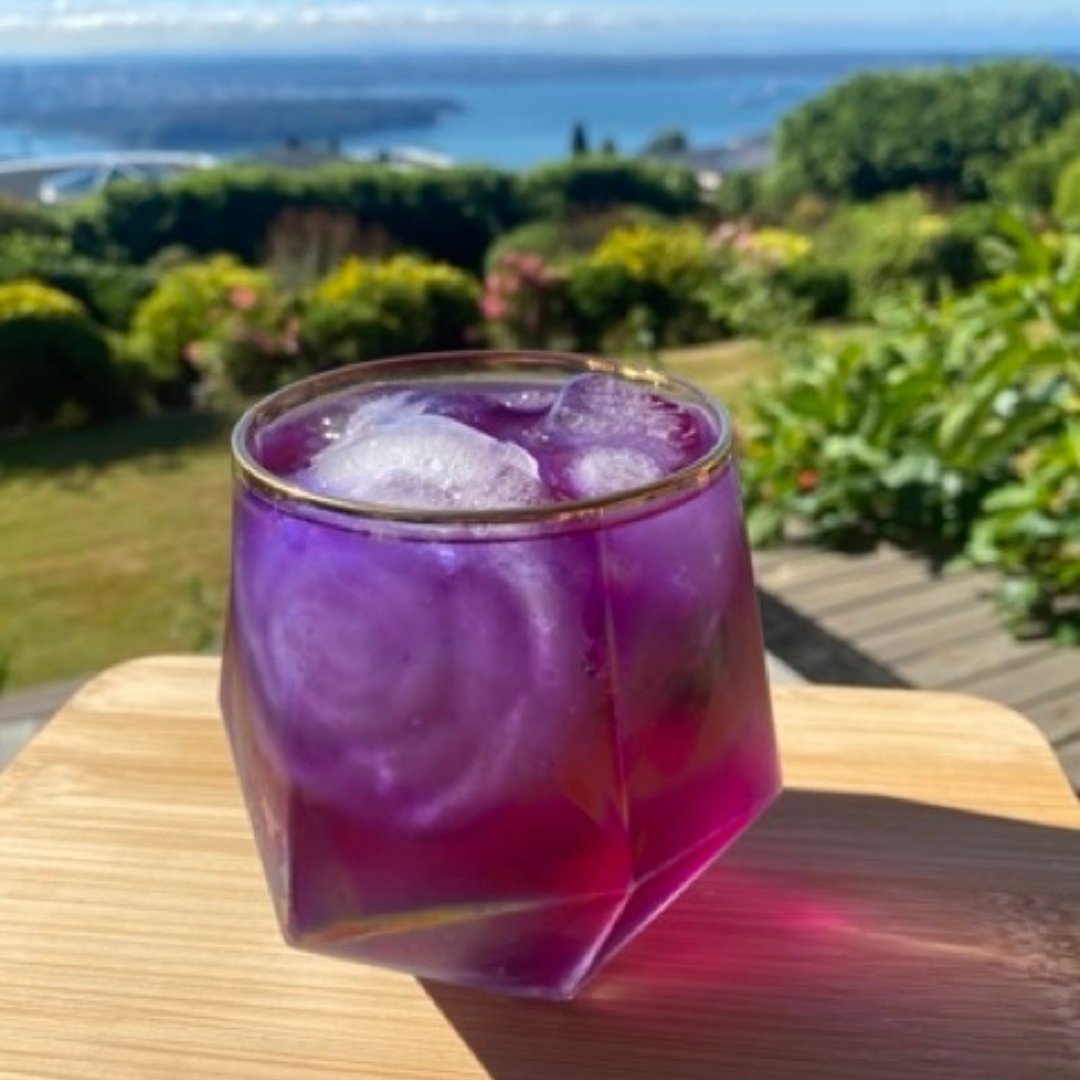
If not, it’s time to add this beautiful tisane to your list of healthy beverages.
Butterfly pea flower is an herb that has been getting a lot of attention. But it’s not just hype: it’s a natural antioxidant and has been used in Chinese and Ayurvedic medicine for centuries.
This plant was first classified by the German botanist Johann Philipp Breyne during expeditions to the island of Ternate in Indonesia in the 1800s. It was named Clitoria ternatea, which was derived from the Latin word “clitoris” because of the flower’s resemblance to the female anatomy. Today, it is known as butterfly pea flower, blue pea flower, and Asian pigeon wings. It has been studied by the scientific community since 1958.
Our butterfly pea flower comes from Thailand, where people have enjoyed a syrupy beverage known as nam dok anchan for ages (see below for the recipe). If you go to a spa in Thailand, they'll serve you this tea because they consider it a “health drink.”
It’s also used in Chinese and Ayurvedic medicine as a brain booster (to enhance memory) and as a calming agent. It is valued for its ability to reduce stress and fend off depression. In Ayurvedic medicine, butterfly pea flower is considered a healing plant with mystic properties. The blog Addictive Wellness notes that traditionally, it symbolized the perfect attachment to the divine and was used in Hindu rituals as part of the worship of the goddess Durga and Lord Shiva.
Perhaps the most magical effect of butterfly pea flower is its ability to change colour when mixed with acidic ingredients, such as lemon or lime juice.
Butterfly pea flower tea can be enjoyed hot or cold, year round. Will you be trying it out? For more information, check out this flower here!
Nam Dok Anchan
Recipe:
- 12 dried butterfly pea flowers
- Lime juice
- Sugar
Start by soaking the flowers in a cup of freshly boiled water.
Steep for 15 minutes, then strain.
Add a few drops of lime juice for sweetness and watch it turned purple.
Pour over ice.


